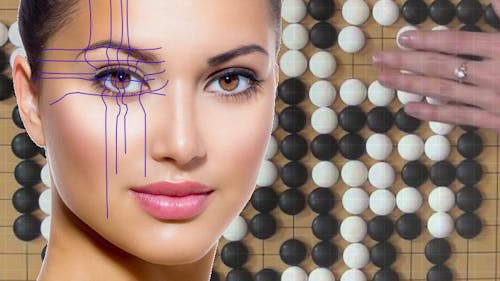Tech: How does AI work?

In the last few weeks, an artificial intelligence (AI) program has been competing with a world champion board game player, showing off the strong advances Google has made in artificial intelligence.
The AI, named AlphaGo, beat 18-time world Go champion Lee Sedol in a series of five Go matches, and showed the world how advanced AI research is, according to the MIT Technology Review website.
AlphaGo showed off some different learning techniques used by an AI, such as deep learning and a tree-search. Using these techniques in a complex game shows how intelligent the AI is, although it has more room to grow, according to the site.
Go is a board game invented in Asia and played for thousands of years. Players take turns placing stones on a board, trying to surround empty areas and capture the opponent’s stones, according to the British Go Association website.
Similar AI victories have taken place in games such as Jeopardy, with IBM’s Watson winning in 2011 and in chess when Garry Kasparov was defeated two decades ago, according to Maclean’s, a weekly news magazine in Canada.
Geoffrey Hinton, a cognitive psychologist and computer scientist who is known for his work in neural networks and deep learning, discussed AlphaGo’s victory in an interview with Maclean’s.
“The neural networks <g>provides</g> you with good intuitions, and that’s what the other programs were lacking, and that’s what people didn’t really understand computers could do,” he said. “I think (Go) is really the pinnacle (of complex board gaming).”
Playing Go requires complex thinking, using reasoning and pre-planning to determine the best strategy for victory, as well as adjusting to the opponent’s moves. This is done through the use of neural networks, allowing computers to think like humans, Hinton said.
AlphaGo’s use of deep learning and neural networks is an application of a newer branch of AI, where the AI uses a system modeled after the human brain’s neurons. Technology has advanced so that deep learning can be explored with sufficient computing power, according to Maclean’s.
Deep learning is a “collection of statistical machine learning techniques,” and can be used to learn features of different objects or systems, such as the curves in handwriting and the strategies of Go, according to datarobot.com.
Researchers tried to increase the complexity with which computers can recognize these small features, but the technology was not powerful enough to accommodate such additions, according to the site.
In a virtual neural network, the computer creates virtual neurons with a random numerical value, between zero and one, which determines how the neuron responds to a digital feature, such as the shade of a color in a specific point, according to MIT Technical Review.
Programmers then repeatedly send the network digital objects so the network learns to detect the presence of the features it is meant to look for. If it does not a find a feature that it should, the neural numerical values are changed so it does work, according to the site.
Recently, researchers have broken down objects into many layers, with the first-layer learning basic recurring features that are recognizable. That information is passed to later layers which recognize more complex features and combinations of prior information, according to the site.
This is comparable to how facial recognition software works, where the computer looks for a basic feature, such as the curves of an eye, then looks for the whole eye and eventually finds the whole face, according to datarobot.com.
Deep learning has many applications in addition to learning to play board games and facial recognition. It is used for language translation, molecule <g>recognition</g> and reverse image searches, according to MIT Technology Review.
In the future, deep learning and AI can be used for <g>self driving</g> cars, train systems to recognize and translate spoken language and suggest advertisements based on a person’s web search history, according to the site.
At the end of the day, people should not be afraid of AI advances because of possible harm that could come from it, Hinton said. Many technological advances can be misused or used to harm people but it should not prevent people from trying to move forward.
“Any new technology, if it’s used by evil people, bad things can happen. But that’s more a question of the politics of the technology,” he said. “It will be much better than us at a lot of things.“
____
Harshel Patel is a School of Arts and Sciences sophomore majoring in molecular biology and biochemistry. He is the digital editor at The Daily Targum. He can be found on Twitter @harshel_p.



